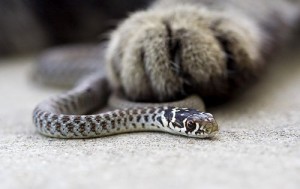 The most amazing thing about firefighters and emergency response people is their use of common sense and an ability to think in the midst of chaos. Firefighters especially learn to adapt whatever is at hand to put the situation more in their favor.
The most amazing thing about firefighters and emergency response people is their use of common sense and an ability to think in the midst of chaos. Firefighters especially learn to adapt whatever is at hand to put the situation more in their favor.
As farmers in Oklahoma, my family and I joked that we could fix anything with “some bubble gum and a little baling wire.” We also had enough sense of competition and pride to not just “make do” with what we had, but to create something better, stronger, and more functional that something bought in a store for the same purpose.
The ability to see beyond problems that a firefighter or farmer might encounter requires common sense deeply rooted in a broad type of situational awareness.
COMMON SENSE
Common sense means different things to different people. From my roots in rural, small-town American to my years in the martial arts and emergency response, I see it as the ability to integrate experiences. To me common sense is:
A knowing or perception regarding nature or human nature that allows a person to integrate situational variables or to extrapolate from a situation the best and most positive results.
Such wisdom is not based on specialized knowledge or advanced education. Rather, it comes from exposure to people or experiences that foster this awareness.
The opposite of common sense, then is unsound judgment or misperception regarding nature or human nature. I’ve witnessed such lack of common sense more among those who gain information from book learning as opposed to first hand experience or immersion into a situation.
BLOOD & GUTS
You can read about firefighting or farming or the martial arts for years, but until you roll up your sleeves, get dirt under your fingernails, or even shed a little blood from intense effort, you can’t understand the true nature what it is to be a firefighter, farmer, or martial artist.
So how does this apply to self defense and how to Think Like A Black Belt?
Everything and nothing.
Nothing because even a totally untrained and scared to death mother of a 3-year-old can kick an attacker’s butt because the mothering instinct and protective rage is so intense it drives her to heroic efforts.
Everything because most self defense is having a wary eye, being street smart, and staying in code yellow. To me these are common sense, but I find many people don’t think about them at all. Why?
The Needy Now
As a nation, my generation and my parent’s generation failed to teach common sense. Instead, lessons helped a generation focus on the needy moment at hand. This makes moments in life segregated, not integrated. We react to a news story and not the background issues. We react to a situation at school or work, but not the deeper historical or emotional variables. We want something to happen right now, and we are unwilling to let time take its course.
And as for self defense, many will see it outside the needy moment of right now, and not prepare — just like many people in the path of a hurricane wait until the last minute or until it’s too late to make good decisions.
Some people only learn to see the big picture when they take their first driving course, and the instructor tells them to keep in mind road conditions, the abilities of the vehicle, as well as all others driving or walking nearby.
Self defense — and citizenship or parenting — requires we see the big picture of what is going on around us. This is also known as situational awareness. Blinder-like inward focus must be replaced by frequent, habitual scans of our environment.
For self defense to work well, it’s best to see danger before it arrives. That gives you time to respond instead of react.
Hey, it’s only common sense.
——
Thank you for visiting and learning about self defense.
If you think others can benefit, please pass it on!
Lori Hoeck
Photo: anomalous4

 Recently I mentioned a few gloom and doom articles on my family Facebook wall. I followed it all up with a rather negative assessment of the world situation.
Recently I mentioned a few gloom and doom articles on my family Facebook wall. I followed it all up with a rather negative assessment of the world situation. The decision to learn
The decision to learn 

 Optical illusions play with what we see. Gaslighting plays with what we think is real.
Optical illusions play with what we see. Gaslighting plays with what we think is real. One of the most diabolical emotional abuses is Gaslighting. Ever heard of it? I hadn’t heard it named until I read a
One of the most diabolical emotional abuses is Gaslighting. Ever heard of it? I hadn’t heard it named until I read a 
 Self defense for kids isn’t always learning how to kick and punch. It’s also learning how to think, how to be aware, and how to keep a street-smart mindset.
Self defense for kids isn’t always learning how to kick and punch. It’s also learning how to think, how to be aware, and how to keep a street-smart mindset.

